Class 10 English Grammar - Noun its Classifications Part 1
What is a noun?
A noun is a word that names something, such as a person, place, thing, or idea. In a sentence, nouns can play the role of subject, direct object, indirect object, subject complement, object complement, appositive, or adjective,
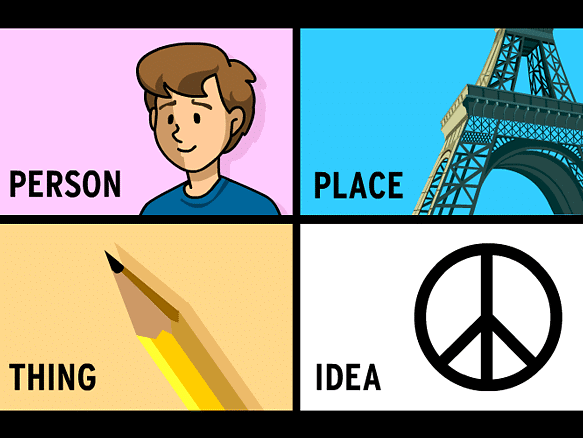
Types of Noun
Nouns form a large proportion of the English vocabulary, and they come in a wide variety of types.
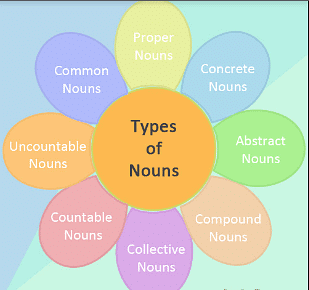
1. Common Noun and Proper Noun
Common Noun
A common noun refers to a general, non-specific person, place, thing, or idea. Common nouns do not typically start with a capital letter unless they appear at the beginning of a sentence.
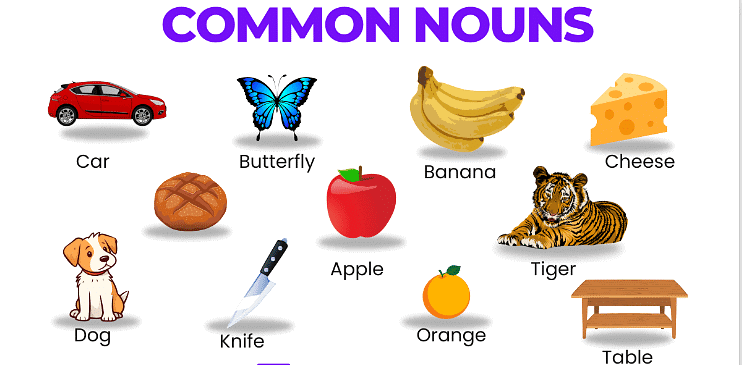
Examples:
- Person: teacher, student, doctor
- Place: city, country, park
- Thing: table, car, book
- Idea: love, happiness, courage
Proper Noun
A proper noun identifies a specific person, place, thing, or idea. Proper nouns always begin with a capital letter, regardless of where they appear in a sentence.
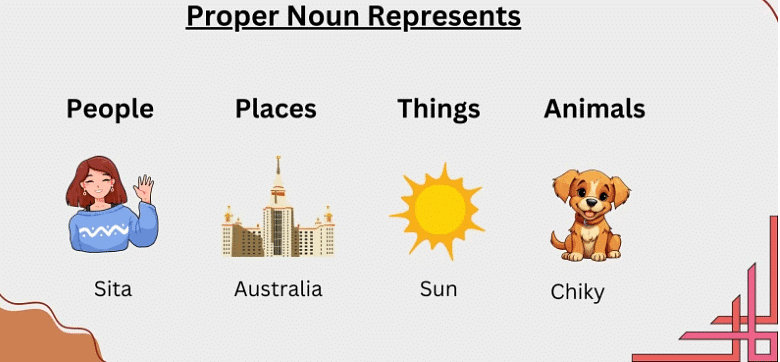
Examples:
- Person: John Smith, Mary Johnson
- Place: Paris, New York City
- Thing: The White House, Coca-Cola
- Idea: Christianity, Buddhism
2. Singular and Plural Noun
Singular Noun
A singular noun refers to one person, animal, thing, or concept. Singular nouns are used when referring to a single item or individual.
Plural Noun
A plural noun refers to more than one person, animal, thing, or concept. Plural nouns are formed in different ways depending on the singular form. Typically, English plurals are formed by adding -s or -es to the singular form, but there are irregular plurals that change the word in other ways (e.g., man → men, child → children).

3. Concrete Noun and Abstract Noun
Concrete Noun
A concrete noun refers to a physical object in the real world, such as a dog, a ball, or an ice cream cone. A concrete noun is a noun that can be identified through one of the five senses (taste, touch, sight, hearing, or smell).
Example 1: "Would someone please answer the phone?"
In the sentence above, the noun phone is a concrete noun: you can touch it, see it, hear it, and maybe even smell it or taste it.
Example 2: What is that noise ?
Even though noise can’t be touched—and the noise may even be coming from several places—you can hear the noise, so it’s a concrete noun.

Abstract Nouns
An abstract noun is used to refer to concepts, ideas, experiences, traits, feelings or entities that cannot be seen, heard, tasted, smelt or touched. Abstract nouns are intangible. There are a lot of abstract nouns (virtues) used in proverbs.
Example 1: We can’t imagine the courage it took to do that.
Courage is an abstract noun because it cannot be seen, heard, tasted, touched, or smelled.
Example 2: Early paleontologists assumed that the small brains of some dinosaurs indicated stupidity of the species.
Stupidity is an abstract noun because it cannot be seen, heard, tasted, touched, or smelled.
Examples based on Quality, action and state:
4. Countable & Uncountable Nouns

Countable Nouns:
Countable nouns are nouns which can be counted, even if the number might be extraordinarily high (like counting all the people in the world). Countable nouns can be used with a/an, the, some, any, a few, and many.
Example 1: Tom brought ten packets of lays for the trip. (Specific number – ten)
Example 2: Mom asked me to buy a dozen eggs. (specific – dozen means twelve)
Uncountable Nouns:
Uncountable nouns, or mass nouns, are nouns that come in a state or quantity which is impossible to count; liquids are uncountable, as are things that act like liquids (sand, air). They are always considered to be singular, and can be used with some, any, a little, and much.
Example 1: An I.Q. test measures intelligence.
Intelligence is an uncountable noun.
Example 2: Students don’t seem to have much homework these days.
This example refers to an unspecified, unquantifiable amount of homework, so homework is an uncountable noun.
5. Collective Nouns
A collective noun is a word or phrase that refers to a group of people or things as one entity. Collective nouns represent more than one person or thing in a class. It isn’t possible to have just one lion in a pride, and a single flower does not make a bouquet. Thus, a collective noun always describes a plurality of one kind or another.
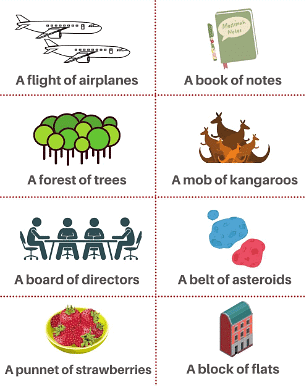 Examples:
Examples:
Collective nouns for groups of animals:
- A pride of lions
- A flock of sheep
Collective nouns for groups of people
- A band of musicians
- A board of directors
Collective nouns for a number of things or objects
- A pair of shoes
- A chain of mountains
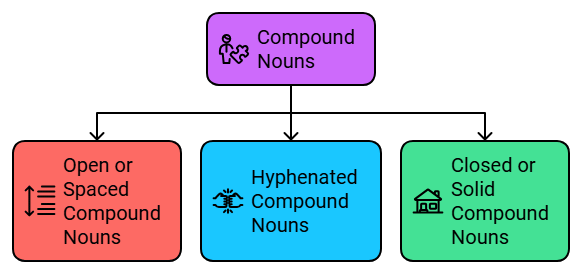
6. Compound Nouns
A compound noun is a noun that is formed by a combination of more than one part of speech. Compound nouns are of three main types:
5.1 Open or spaced compound nouns
5.2 Hyphenated compound nouns
5.3 Closed or solid compound nouns
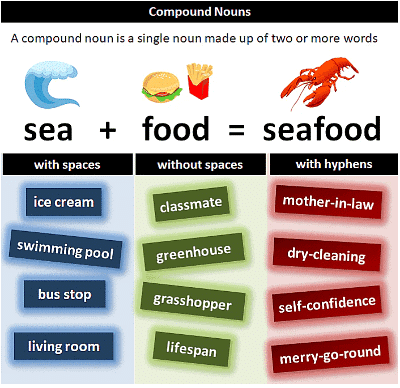
5.1 Open or Spaced Compound Nouns
An open compound word is created in cases when the modifying adjective is used with its noun to create a new noun. This isn’t quite the same as a noun with a modifying adjective. We just use a space between the adjective and the noun, so sometimes it can be hard to identify as a compound; however, if the two words are commonly used together, it’s considered to be a compound word.
Example: Living Room, Full Moon, Real Estate, Dinner Table
5.2 Hyphenated Compound Nouns
There are a great many grammar rules regarding hyphens in compound words. One important rule of thumb to remember is that in most cases, a compound adjective is hyphenated if placed before the noun it modifies, but not if placed after the noun.
Example: a long-term solution, an up-to-date user guide
5.3 Closed or Solid Compound Nouns
Closed compound words look like one word. At one point, these words weren’t used together, but they’re now accepted as a “real word” in the English language. Closed compound words are usually made up of only two words.
Example: Notebook, Superman, Waistcoat, Bookstore
7. Possessive Nouns
Possessive nouns are nouns that possess something; i.e., they have something. You can identify a possessive noun by the apostrophe; most nouns show the possessive with an apostrophe and an s.
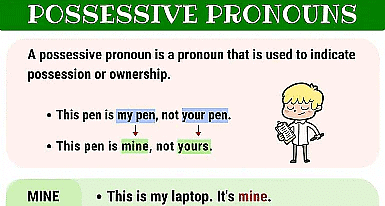
Example 1: The cat’s toy was missing.
The cat possesses the toy, and we denote this by the use of ’s at the end of cat.
When a singular noun ends in the letter s or z, the same format often applies. This is a matter of style, however, and some style guides suggest leaving off the extra s.
Example 2: I have been invited to the boss’s house for dinner.
|
20 videos|143 docs|18 tests
|
FAQs on Class 10 English Grammar - Noun its Classifications Part 1
| 1. What is a noun and why is it important in English grammar? |  |
| 2. What is the difference between a common noun and a proper noun? |  |
| 3. How do singular nouns differ from plural nouns? |  |
| 4. What are countable and uncountable nouns? |  |
| 5. Can you give examples of collective nouns and compound nouns? |  |

















